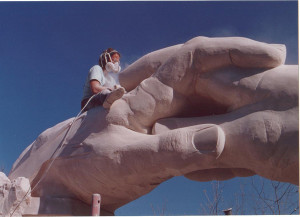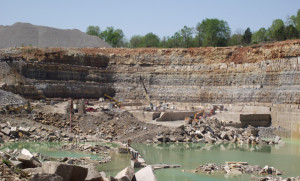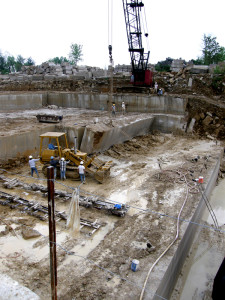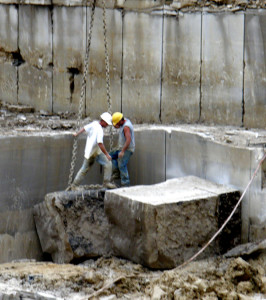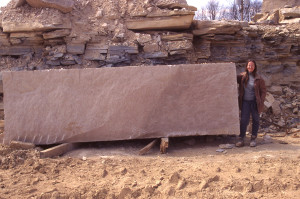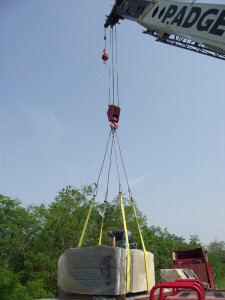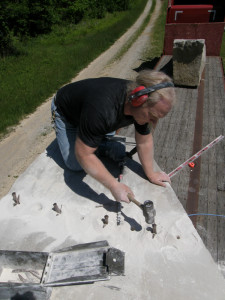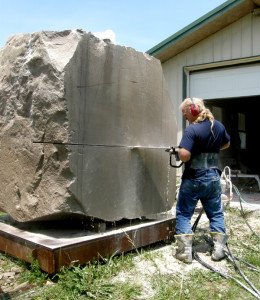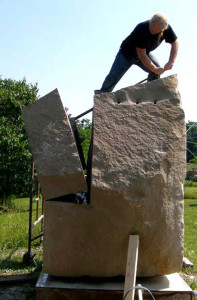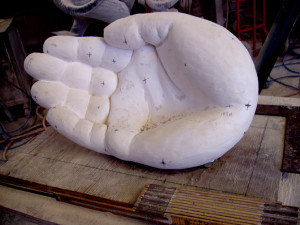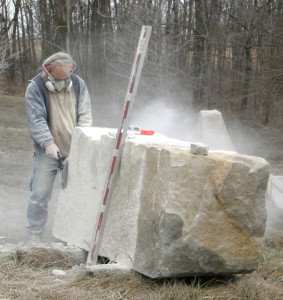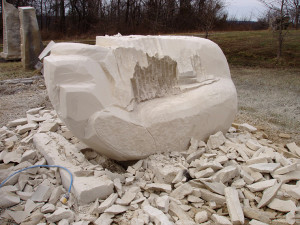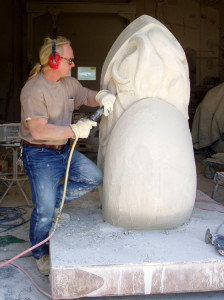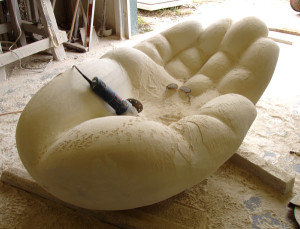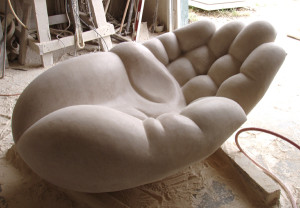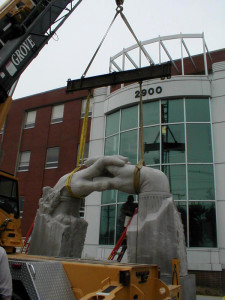Hopefully, this page will help explain what goes into creating a stone sculpture.
Most of my sculptures are made from Indiana Limestone which is quarried less than 100 miles from the studio.
This is Victor Quarry near Bloomington where I get most of my stone.
I also like the stone from Reed Quarry in Bloomington. They are turning over that 250 ton ‘ledge’.
They cut, drill and split the stone into manageable quarry blocks and lift them out of the quarry.
This is the 48,000 lb. block for the Opportunity Portal that came out of Reed Quarry.
Meg White, standing next to it, helps give a sense for how big some of these blocks can get.
After we pick out our quarry blocks, they are brought to us by semi trucks and unloaded with a crane.
Stone sculpture is a ‘subtractive’ process; you take away what you don’t need.
Sometimes, I’ll drill holes and drive wedges to split a large piece from a block.
Other times, I’ll use a water-cooled diamond chainsaw to remove large pieces from the block.
Whether I drill and split or saw, I’m able to use the large pieces of scrap for other projects.
Small sculptures can be created by “free carving” – just letting the stone ‘speak’ to you as you carve.
Large projects require a model, like this plaster design for a hand.
I use all sorts of techniques for enlarging the design into the stone.
Most of the rough removal of waste stone happens with a 10″ diamond blade on a Bosch grinder.
I’ll cut slices about 3″ deep and break them off with a hammer and chisel.
An air hammer can be used for a lot of the sculpting, but I mainly use it for finish textures.
This 4-1/2″ Bosch grinder with a diamond blade does almost all of the shaping.
There are also lots of weird-shaped grinders for getting into tight places.
Limestone is polished by a series of ever finer grit sandpaper.
I use a variety of air and electric sanders to get the job done.
A semi truck is used for delivering any sculptures that weigh more than 10,000 lbs.
Cranes are usually used to set the piece – and I am always there to oversee the final installation.
…and that’s the short version…
